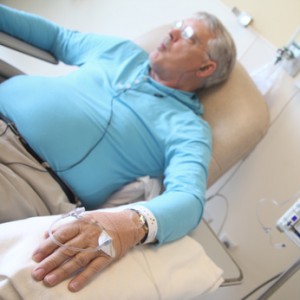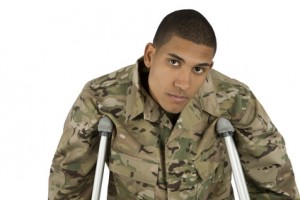A Minneapolis-based hospital group will require that their employes wear matching uniforms distinguished by colors starting in May, one color per job category. Think Star Trek, but in a more Earth-bound (and medical) setting.
The idea is to make it easier for patients and family members to identify their care team by the color of their uniform. However, unionized nurses are not happy that the change has been imposed from on high, without any negotiation. Many of them also disagree with the new uniform plan. This article in St. Paul Pioneer Press quotes oncology nurse Cristin Betzold of Blaine as saying that her patients appreciate the variety of bright colors she wears. “I have many patients comment on how at least they see a little bit of color in what they see during the day from my uniform,” she said.
They also question whether the color-coding would actually help patients.
So, amidst the discord, the Minnesota Nurses Association has filed a grievance over the uniform policy. The uniform policy will still go into effect on schedule but may roll back later depending on result of the arbitration process.
A survey of hospitals across the Twin Cities finds that there’s no uniform position on color-coded outfits.
There’s no requirement for matching scrubs at St. Joseph’s Hospital in St. Paul, Methodist Hospital in St. Louis Park or medical centers in the Minneapolis-based Fairview system.
To address concerns that hospital patients sometimes struggle to recognize who’s caring for them, Fairview workers get pointers on introducing themselves. Workers at St. Joseph’s, meanwhile, wear super-sized name tags called “badge buddies” that clearly identify their skill set.
But other medical centers have switched to standardized uniforms.
About five years ago, Woodwinds Health Campus in Woodbury started requiring navy blue scrubs for its RNs. Nurses selected the color in a vote after hearing from an advisory committee that matching outfits would be helpful to patients, said Cindy Bultena, the chief nursing officer at Woodwinds.
Regions Hospital in St. Paul has required workers in the same job category to wear the same color for at least a decade and is in the process of again affirming the policy. Over the past few years, workers have started wearing patterned scrubs within their given color, but solids will be required as of Jan. 1, said Jon Henkel, a hospital official.
At the Mayo Clinic in Rochester, Minn., uniforms are color-coded within work units but not across all clinical areas. That means, for example, that not all nurses wear the same color, but all workers in obstetrics wear teal green scrubs.
“The dress code is always under review and we are currently entertaining administering a patient study which will help identify their needs specific to dress,” said Kelley Luckstein, a clinic representative, in an email.
Allina officials say their hospital in Buffalo first experimented in 2010 with what’s now been dubbed the “uniform initiative.” The medical center saw its patient satisfaction scores improve following the change to standardized uniforms.
The health system started talking with employees last year about the switch, which will apply at the system’s 11 hospitals. In December, about 5,500 employees cast ballots for their favorite colors.
“Some employees networked across the entire Allina system to say, ‘Let’s pick these as the top three choices,’ ” said Sorbel, the United Hospital official. “The larger groups got the colors they wanted.”
Even so, the change has proven divisive.
Patients respond to variety, especially pediatric patients, said Bernadine Engeldorf, a nurse at United who also is first vice president of the Minnesota Nurses Association. She added that nurses like the freedom of being able to choose their outfits.
In contrast to the cheery colors some nurses currently wear, navy blue seems “somewhat muted, dark,” she said.
“People take a lot of pride in what they wear to work,” said Betzold, the nurse from Blaine. “I think people don’t agree (with the change), but obviously nobody wants to be terminated because they chose not to wear navy blue.”
The change is being felt in the pocketbook, too, although there are different estimates of the magnitude.
The average uniform costs $80 to $100, said John Nemo, spokesman for the Minnesota Nurses Association. Full time nurses need five to 10 sets of uniforms, he said, because they can only be worn one day before washing. Replacement occurs every six to 12 months, Nemo added, depending on the quality of garments.
Allina officials, however, quote a range of $20 to $50 for scrubs, adding they have negotiated special discounts for workers who purchase from a preferred vendor. The health system is providing up to $80 in vouchers to workers to help defray costs.
“We do recognize that in making a change, there is a financial burden to our employees,” said Tracy Kirby, the director of nursing at Abbott Northwestern.
As the labor dispute plays out, some wonder why navy seems to have become the new color of nursing.
Sure, it’s a color that doesn’t show spots or evoke strong emotions, said Helen Strike, the chief nursing officer at St. Joseph’s Hospital. But there was a time when all nurses wore uniforms, Strike said, and the color always was white.
“Even today, kids who are 3 or 4 years old have this idea that a nurse wears white,” she said. “There’s something very positive about that historical perspective, and I wonder why we don’t utilize that more in nursing.”
White also has been linked with doctors through their historic use of white coats. The new Allina policy, however, won’t apply to physicians, since many aren’t directly employed by the health system.
Kirby, the nursing director at Abbott Northwestern, added: “Patients tend to really know who their doctors are.”










